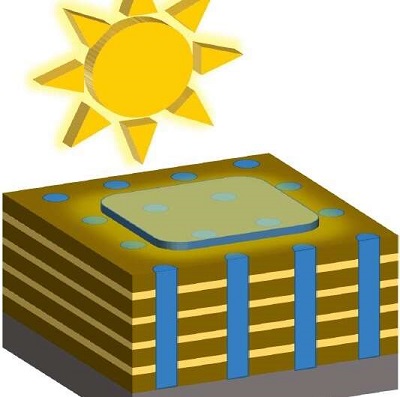A new method for constructing special Solar Cell could significantly increase their Efficiency. Not only are the cells made up of thin layers, but they also consist of specifically arranged nano blocks. This has been shown in a new study by an international research team led by the Martin Luther University Halle-Wittenberg (MLU).
Commercially available solar cells are mostly made of silicon. “Based on the properties of silicon it’s not feasible to say that their efficiency can be increased indefinitely,” says Dr. Akash Bhatnagar, a physicist from the Centre for Innovation Competence (ZIK) “SiLi-nano” at MLU. His research team is therefore studying the so-called anomalous photovoltaic effect which occurs in certain materials. The anomalous photovoltaic effect does not require a p-n junction which otherwise enables the flow of current in silicon solar cells. The direction of the current is determined at the atomic level by the asymmetric crystal structure of the corresponding materials. These materials are usually oxides, which have some crucial advantages: they are easier to manufacture and significantly more durable. However, they often do not absorb much sunlight and have a very high electrical resistance. “In order to utilize these materials and their effect, creative cell architectures are needed that reinforce the advantages and compensate for the disadvantages,” explains Lutz Mühlenbein, lead author of the study.
The new architecture actually increased the cell’s electrical output by a factor of five. Another advantage of the new method is that it is very easy to implement. “The material forms this desired structure on its own. No extreme external conditions are needed to force it into this state,” says Mühlenbein. The idea, for which the researchers have now provided an initial feasibility study, could also be applied to materials other than nickel oxide. Follow-up studies now need to examine if and how such solar cells can be produced on an industrial scale.









